The Village Market, Thornhill, Ontario
An organic market that contributes financial support to a school
Rudolf Steiner, when writing about Threefolding and economic concepts, points out that a healthy society needs to recognize that there are three kinds of money: purchase, loan and gift money. The importance of gift money should not be underestimated. A business does of course need to invest some of its profits in its own business to improve its business, but some of its profits can be revitalized via gifts to institutions such as schools that teach the next generation. This post tells about a business - namely an organic farmers’ market - which was founded with the idea that some of the proceeds from the market could help support an independent school.
THE VILLAGE MARKET OPENS FOR THE SEASON TOMORROW - SATURDAY MAY 3, 2025, 8 AM TO 1 PM.
The Village Market in Thornhill, Ontario has been around for 34 years and has been contributing to the finances of the Toronto Waldorf School, a K-12 independent school in the suburbs of Toronto, Ontario. The idea for starting this market came from two Toronto Waldorf teachers, Helene Gross and her brother-in-law, Desmond Gross, who were both originally from South Africa.
I asked Helene to write about how the Village Market market was established.
Helene Gross:
In the summer of 1991, my brother-in-law, Desmond, and I were both teaching at TWS. Desmond was a class teacher and I was teaching high school math. We had recently moved to Canada from South Africa where the Bryanston Market provided a consistent alternative income stream to the Michaelmount Waldorf School. Additionally, the market provided a venue for organic farmers and crafts people to sell their wares as well as a community gathering space.
+27(11) 706 3671 | 40 Culross rd, Bryanston, Johannesburg | Open on Thursday & Saturday from 9am to 3pm
In the summer of 1991, TWS hosted the annual AWSNA Summer Conference and a group of TWS employees, encouraged by our description of the Bryanston Market, made the decision to try to begin a similar initiative at TWS. Jean Thomas-Hawkes agreed to become the first manager, and I agreed to manage the finances. We then approached the school leadership team who agreed that we could go ahead with the venture.
The initial model followed the then structure of the Bryanston Market which was that vendors issued invoices to customers and paid a central cashier (Helene) who then deducted a percentage contribution towards the school before paying out the weekly proceeds to the vendors. Jean approached a number of farmers and craftspeople who had sold their wares at various school events over the years, most of whom agreed to become weekly vendors. The funds were directed towards the school's general fund with the request that consideration be given to building the Tuition Assistance fund. The hope was that we could build the market to become a regular source of income for this fund.
This model continued for some years with changes in market management and the eventual recognition that a more streamlined approach to gathering fees from the vendors would need to be established and that in order to establish consistency in management it would be necessary to pay the manager a regular salary rather than a percentage of weekly takings. This later evolved to a rental arrangement with the school with the market running independently.
Now, almost 35 years later, the market runs from May to December and continues to provide a venue for local farmers and crafts people to sell their wares, While the Bryanston Market has evolved into a local tourist attraction in Johannesburg, South Africa, the weather and the lack of a dedicated space have not allowed for a similar development at TWS. It does however continue to be a source of regular rental income and a community hub for the extended school and neighbourhood community.
by Helene Gross
Thank you, Helene for this interesting information. I also asked Richard Chomko, who was the Village Market manager for 24 years, 1994 to 2018, to share some of his experiences in connection with the Village Market.
Richard Chomko:
I was raised on a berry farm near Lake Ontario between Whitby and Ajax. I lived the farming life between the ages of 3 and 15 and enjoyed growing up there. I hadn’t been much interested in agriculture during my teen years. However, after I discovered anthroposophy at the age of 21 and was taking a Foundation Year at Emerson College in 1975, I gravitated to hanging out with the biodynamic agriculture students at Emerson College and sat in on some of their classes.
A few years later, back in Canada, I studied agriculture at Kemptville College, specializing in agricultural journalism. I wrote for the Farm and Country newspaper, and contributed to the Ontario biodynamic newsletter and the Ecological Farmers newsletter. However, throughout all this, I was becoming aware that the big problem in agriculture was the challenge of farmers not being able to earn enough from the sale of their produce to make their farming operations economically sustainable.
So I was keenly interested to hear Ernst Barkhoff’s one and only lecture in Toronto in 1979 and to study his ideas about new economic models for land ownership. Barkhoff has been one of the founders of the GLS (anthroposophical) bank in Germany. I was also inspired to take part in several workshops and conferences in the early 1980s with German community farmer Trauger Groh who promoted the idea of community supported agriculture. He encouraged farmers to do more of their own processing so that, for example, they could be providing bread instead of grains, and cheese instead of milk.
Also in the 1980s, at the invitation of Michael Schuster, who until then had been Mr. Biodynamics in Ontario, I agreed to become one of the founding board members of the Society for Biodynamic Farming and Gardening in Ontario. In that Society I worked with others, including Alex Murchison, Aesgaard Koekebakker, Doug Huntley and Eric Smedley to organize conferences on biodynamics, many of which took place at the Toronto Waldorf School (TWS).
Several years before the start of the Village Market, there had been a grassroots movement among TWS parents and faculty, spearheaded by high school English teacher Anne Greer, to start a pre-order food co-op, which proved to be quite successful, though it was a lot of work for some people. We eventually recognized we needed to pay the manager for all the work she was doing on behalf of the co-op. In what was clearly (to me at least) a nod to Steiner’s ideas on Threefolding, the co-op was named “The Third Stream Co-op”. I understood this to mean that the co-op saw itself as belonging to the economic steam and that it recognized the existence and independence of both the cultural/spiritual and the rights streams.
So, by the time Helene and Desmond Gross put forward the idea of a farmers market at the school in 1991 to help create a non-tuition-fee-based stream of monetary support for TWS, I was well prepared to be part of that solution. The Village Market had a series of three or more managers over the first three years of its existence. I suspect they had been frustrated in trying to work with the kind of central payment system that had been used in the South African market that the Village Market was being modelled on.
The way that system worked was that when you wanted to purchase something, you first went to see the vendor of that product, then they gave you a piece of paper which you took to a central cashier. There you made your payment, and received a receipt which you then presented to the vendor to have them give you your produce. The point of doing it that way was probably to ensure that the proper commission was paid to the market. However, it made for a very cumbersome purchasing process, and a lot of accounting work for the manager who would need to tally all the sales from each vendor and remit to them the amounts owed after subtracting the commission to the market, which, as I recall was 15% at the South African markets.
Thankfully, that system had been abandoned by the time I got my turn at being the market manager. And we had reduced the commission to 7.5% for food, and 10% for other things. What we were doing instead of the central cash was depending on vendors to honestly report their sales and pay the commission owing, according to our percentages. At this stage of the market there was also a table fee of about $10 a table per Saturday in addition to the percentages. So if a vendor sold nothing, they would just pay the table fee. And if they sold a lot, they would pay the table fee plus a percentage of their sales. Of course with this system we never could tell how honest the vendors were in reporting their sales. One vendor paid total fees of about $100 for just one table but that was many years later when the market was really humming. I do think they were being honest.
The first summer I managed the market I did it as a volunteer. At the time, I was part of the Market Management Committee. Some of the vendors had wanted to close up the market over the summer, when traffic was slower due to people being on holidays and school being out of session. But I and some of the vendors thought we should definitely keep it going through the peak growing season. That summer of 1994 the market was so small it fit in the upstairs lobby of the school. During the school year, it had been in the lower gym.
That summer was the first time farmer Michael Lanigan showed up at the Market from Uxbridge bringing a car full of produce. Years later, Mike told me that that first Saturday he didn’t sell enough to pay for the gas he burned driving back and forth from his farm in Uxbridge in his old Chevy Impala. But he persevered, and eventually became our main anchor vendor, the farmer who never missed a market, and who had 20 tables of produce and was employing half a dozen teenage students to help with cash and restocking.
The Social Dimension
Long before the Market had grown to the point where it became commercially viable, it was already a success on the social level. People enjoyed coming together on Saturday mornings to offer their wares or shop and to hobnob with one another while sharing a coffee or lunch at the market cafe and listening to live music performed by Waldorf students or other local musicians.
From early on there was a revolving cast of people who would come to the market at least partly to hang out with one another and meet socially. I remember reading in one of Bernard Lievegood’s books about the three kinds of groups: study groups, action groups, and social groups. What we had at the market for all those years was one of the few instances I’ve found of a truly social group.
In later years, after I had passed the market on to Brooke Scott and socializing was no longer encouraged there due to Covid restrictions, our social group continued to meet regularly in other nearby venues, and now that the market is closed from January though May, our group still continues to meet some Saturday mornings during those months, and not for any purpose beyond socializing.
Once, out of the blue, a customer told me that the market had a very west-coast feel to it. I took that as a compliment. I think on some level I had seen my work as a manager at the market as curating a community. In addition to the regular selling of organic and biodynamic food and crafts, we did also have occasional cultural events such as workshops on topics such as raw-food preparation, solar power, bread baking, and emergency preparedness. One year we partnered with a local seed-saving initiative and these Seedy Saturday folks brought their own workshops to the market.
Our organic and biodynamic farmers were the celebrities of the market. The customers enjoyed making a personal connection with the farmers who grew their food. It was a love-in. Our main farmer, Mike Lanigan used to host a farm tour at his farm in Uxbridge every summer which was typically attended by some 40 or 50 people, most of whom were customers from the market. Mike would take us around in tractor or horse-drawn hay wagons, stopping at points of interest to talk about how he grew the food that he sold at the market. Mike and his farm were also featured in a series on Global TV about the different stages of farming through the seasons and about his apprenticeship program for young people who wanted to learn organic farming.
Another social dimension of the market is that the many teenagers who work at helping the vendors for money, gained valuable experience in dealing with the demands of a work situation, and learned to feel more comfortable talking with people of all age groups. And they could do it all in the context of a job that they could feel was making a worthwhile contribution to the world. It was beautiful to see the transformation many of them went through over their years at the market.
One particularly touching story was that of a young woman, Edith Barabash, who had set her mind that she wanted to work for Mike Lanigan at the market. I asked Edith to write a bit about her experience at the market and helping Mike convert his beef herd into an animal home (sanctuary). She writes:
I still have vivid memories of the market from when we just moved into the neighbourhood, I think I was 8 or 9. I don't know why I was so drawn to it, I just loved the feeling of being there and it was always an exciting outing with my parents. When I was old enough to work there (maybe 14 or 15), I walked in ready to hand my resume to any vendor, and the first person who I happened to give it to was Mike's son, Rowan. He said he would pass it along to Mike, but I'm not sure if he ever did! I'm quite stubborn, so I kept coming back until Mike agreed to let me stay.
Looking back now, I'm really grateful for how much responsibility Mike gave me. By the time I was 16, I was coming in to the market at 4 am to help unload his truck and set up all the produce. The market gave me a sense of community and structure, which is important for a teenager. The vendors, staff and even the customers really felt like family to me!
I worked on the farm for 3 summers, before starting up the animal home with Mike. Interning on the farm was a challenge, but felt like a huge adventure and I ended up loving it. We started up the animal home in 2016 and it has grown immensely - we're now a registered charity and I serve as the Executive Director. Our events draw thousands of people each year!
In total, I worked at the market for 10 years. I went to law school, and then did my articling (legal internship) in Victoria, BC at the University of Victoria's Environmental Law Center. I worked at another law firm on the island before moving back to Toronto, and am now licensed as a lawyer.
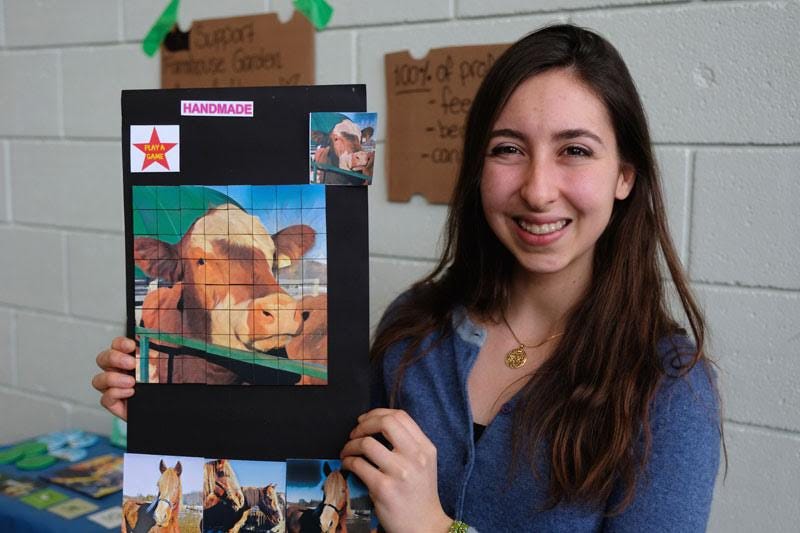
The Economics of the Market
At its peak the Market was grossing about $50-60,000, of which about $25,000 was being given to the school. Remuneration for the manager evolved over the years to become a combination of a base amount plus an additional percentage of the market’s gross income. We tweaked the formula as we went along. For many years, the amount given to the school was based on what the market committee thought we could afford to give, based on our financial situation at the end of each year. The committee consisted of the manager and two faculty member from the school. Market vendors, many of whom realized that they were paying higher table fees than they would at other markets, felt gratified to receive thank you cards from the TWS faculty, thanking them for their support. At one point the market was listed on the school’s website as a major donor and credited with having given more than $250,000 to the school over the years.
Things shifted a bit in later years when the school wanted to spin the market off as the market’s own legal incorporated entity, and what had been thought of as donations from the market to the school was reclassified as “rent”. I then became the owner of the Market as well as the manager. When I set up that corporation at the behest of the TWS board, I decided to make it a for-profit corporation as the overhead to make it non-profit was too onerous. Not that we ever made much in the way of profit. Part of the complexity of a non profit is that we would have needed to set up out own board of directors, with all the complications that entails. So we took the simpler route.
In 2018 I passed the market on to a homeschooling family. I sold them the corporation that was the market. Dave Nelson and his older sons had been helping me with setup and cleanup. But it was the mother, Brooke Scott, who ended up running the market after I left. Of course I made myself available for consultation whenever she needed help and I still continued to come to the market most Saturdays to buy food and visit friends.
by Richard Chomko
Thank you, Richard, for your reminiscences. Finally, I spoke to Brooke Scott, who is the current Village Market manager.
Brooke Scott
EW: Hi Brooke! Nice to get a chance to talk to you! You have been managing the Village Market since 2018. I am wondering what changes did you make after you took over?
BS: When I began in 2018, I was finding my feet. I kept all the vendors who had been there earlier. Mike Lanigan retired in 2020, but Mike had made a connection with farmers Elizabeth Stocking and Adrian Stocking, her son. They run Willo’Wind Farm, located in Zephyr, close to Mike’s farm and Willo’Wind has been a steady presence at the market ever since. I did reach out to other farms such as the Sharon Creek Farm, a farm that grows berries. The owner of Sharon Creek Farm came for a while and then she introduced me to Sina who applied to be a vendor and then he began to be a Village Market vendor. I also reached out to find more musicians.
EW: Musicians are frequently playing at the market. How have you arranged that?
BS: I had struggled with finding musicians who could come consistently, but then one day the local MPP came in and connected me with York Open Mic which has turned out to be a great connection. At the market, there are some tables for customers to sit down at with a bite to eat, and listen to the music - it’s like a party. I have enjoyed having new musicians come regularly. York Open Mic was established by a music coordinator who has established her own business in York Region. She knows the musicians and seems to know exactly what type of musician is a good fit for the Village Market. Last year, I noticed that when the first musicians played - two customers were crying.
EW: How was it to run the market during Covid?
BS: It was challenging, but the whole market community was very supportive and kept the market going by coming to purchase, even though it was not the experience they were accustomed to. Their shopping at the Village Market every Saturday had nearly become a ritual. So even though things were different during Covid, they could still see the people they were familiar with seeing every Saturday.
EW: How did things at the market change during Covid?
BS: Well, we had a lot of rules to follow. The first was that we needed to have permission from the Toronto Waldorf School and public health to run the market. If public health said we could operate, OK. We stripped down to food only. We had all our famers, bakers and some prepared food. The rules changed frequently.
EW: Are there many regular customers at the market?
BS: Many regular customers have been there since the beginning of the market - for example Elisabeth Y. who now lives at Hesperus Village. The neighbourhood is growing and changing - and now we get quite a few young families who are looking for a local market. One thing with the pandemic, people started to look for things that are closer to home. You don’t need to explain anymore why you would purchase organic from local farmers. That is something that people are looking for now. They are looking for a connection to where their food comes from.
EW: What aspects of being the manager do you particularly enjoy?
BS: I actually really love seeing all the people. I’m pretty much an introvert, but I love knowing I have this time on Saturday to meet all these different people. I love meeting the farmers and helping them. I think we all need to work harder to not lose our local farms. When you go to a grocery store, you pick up a bag of carrots but you don’t have the same experience as at the market when you buy a bunch of carrots with their tops still on. You know that people have washed those carrots and driven them to the market just a few hours earlier.
EW: What hopes do you have for the market going forward?
BS: I hope we can support more farmers. I would like to have more prepared foods in addition to the healthy food that we already have. Because I know it is a reality that not everyone cooks every day, I would like to see healthy foods available for families to pick up.
EW: The Village Market customers appreciate you being there for them.
BS: Humans have needs - eating food, purchasing food from farmers who actually grow the food and who sell ready-made food that they themselves have made. Having musicians play at the market is a wonderful extra. I want everyone - vendors, customers and musicians to enjoy themselves when they are at the Village Market.
Postscript: The Village Market opens for the 2025 season on Saturday, May 3, 2025 and will be open every Saturday until December 20. Open 8 am to 1 pm.



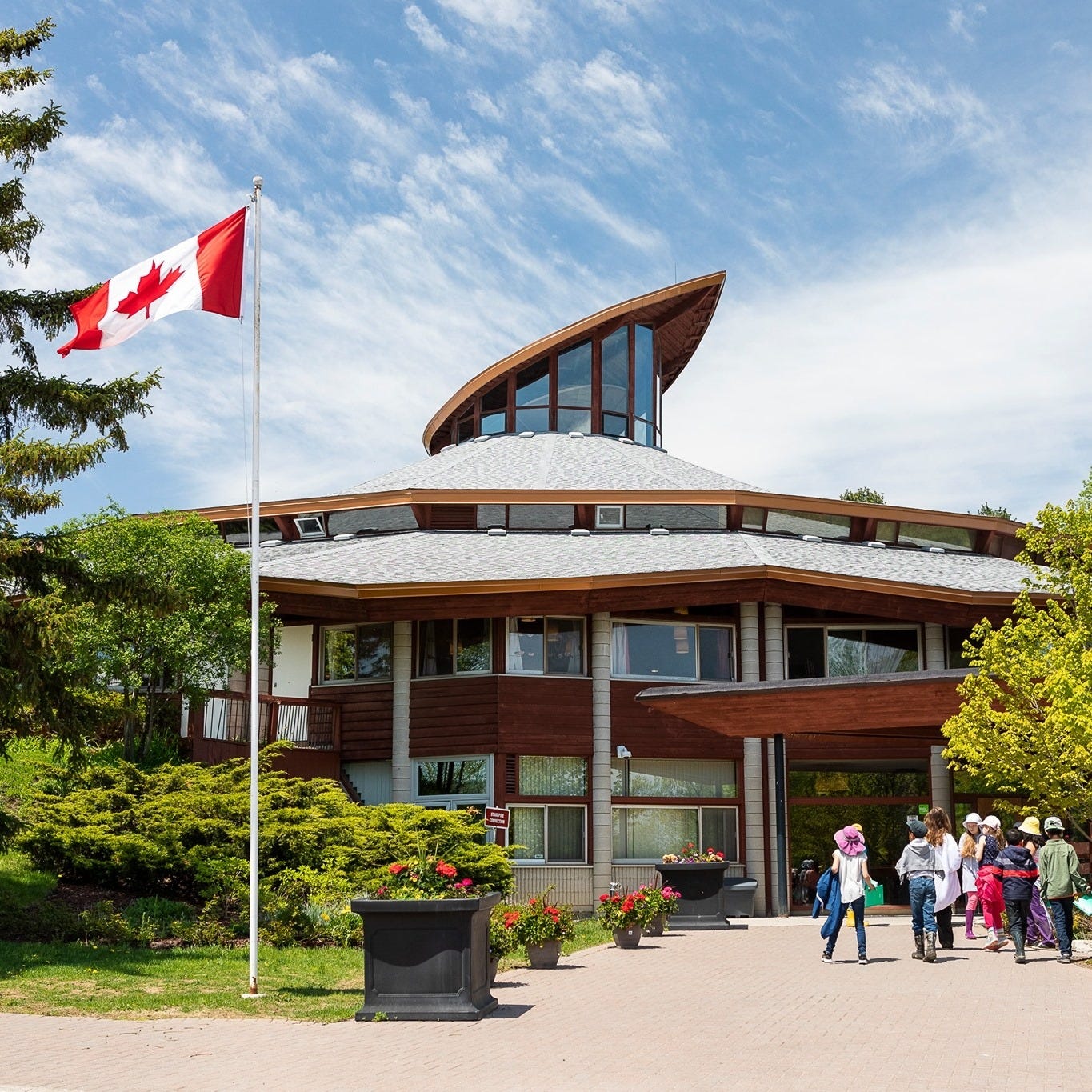
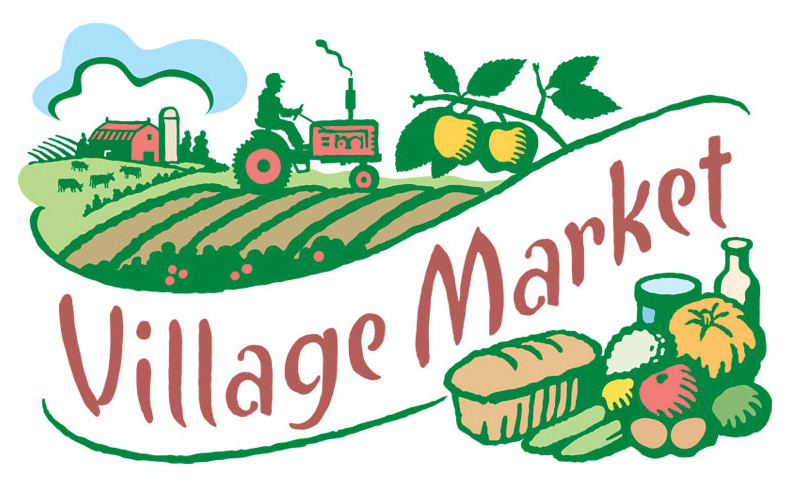


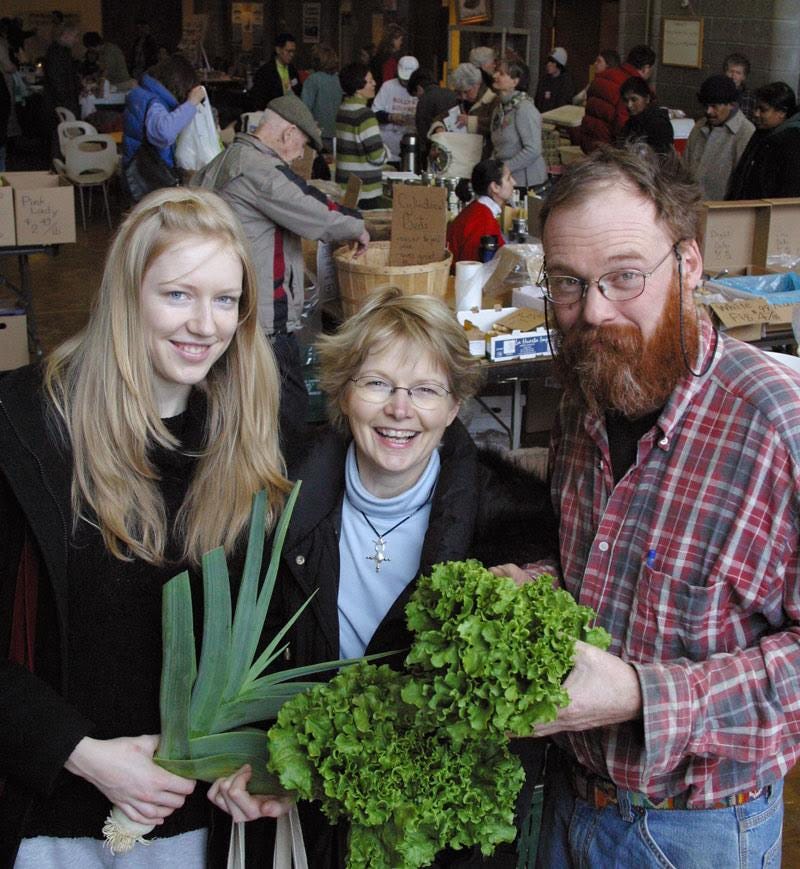
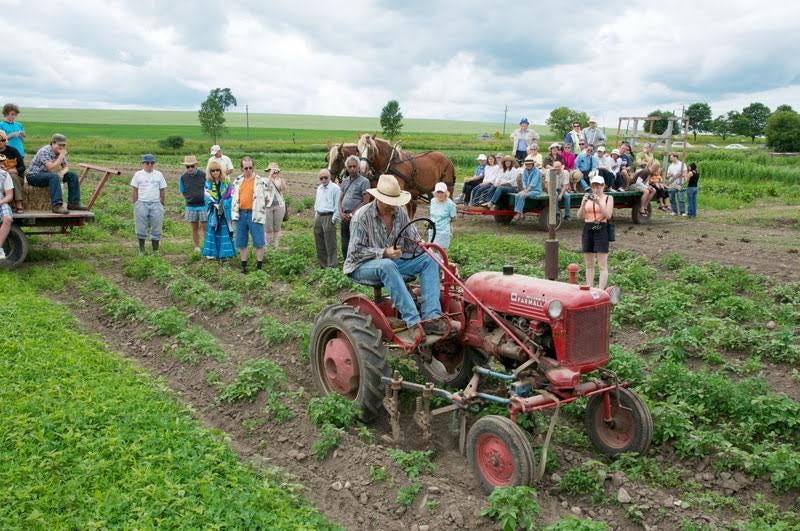
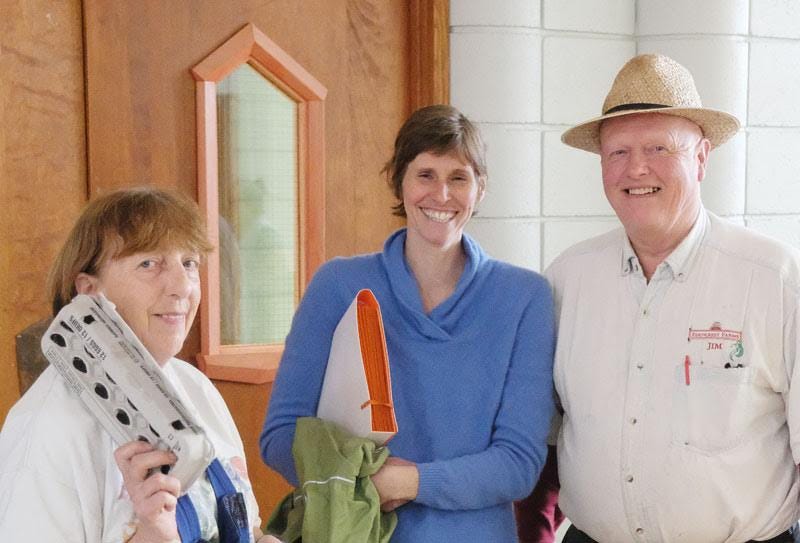
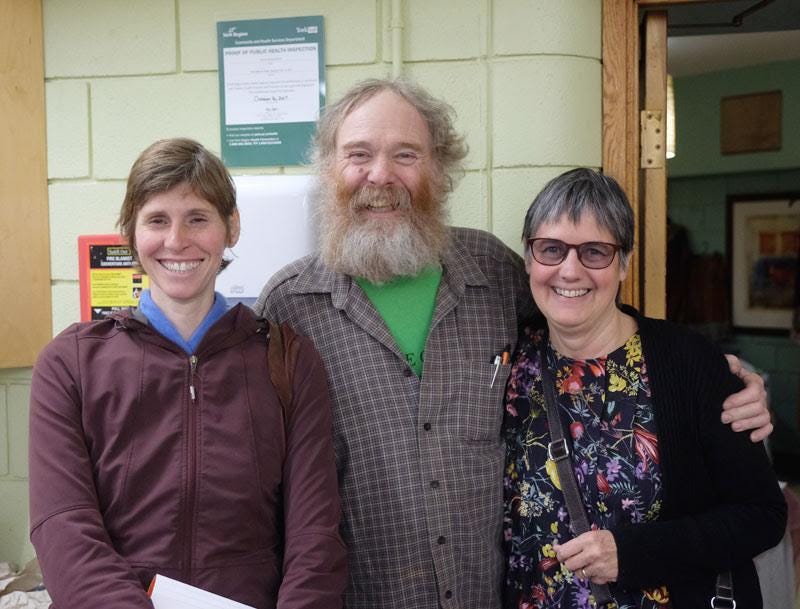
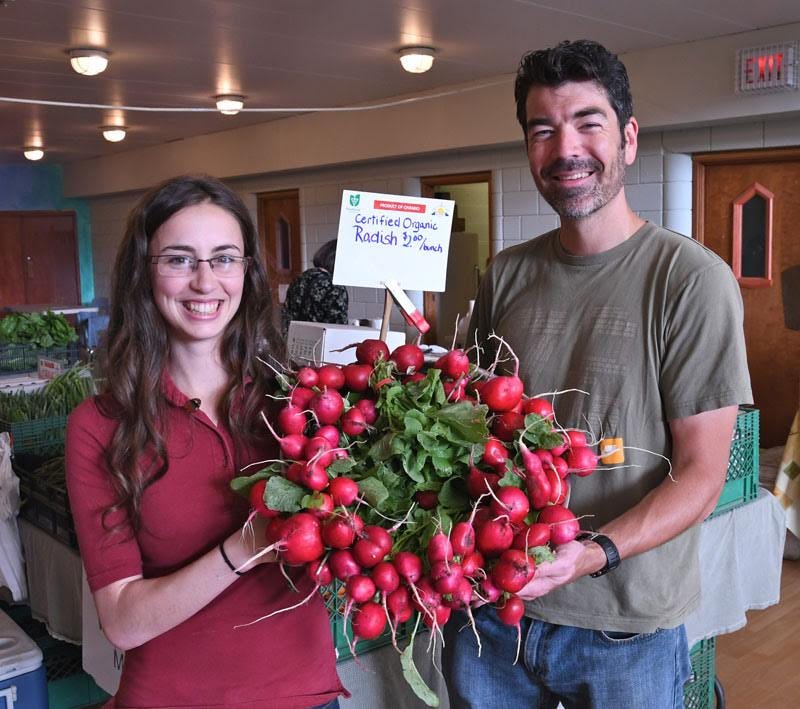
Sounds like a pretty amazing initiative. Thanks for sharing!